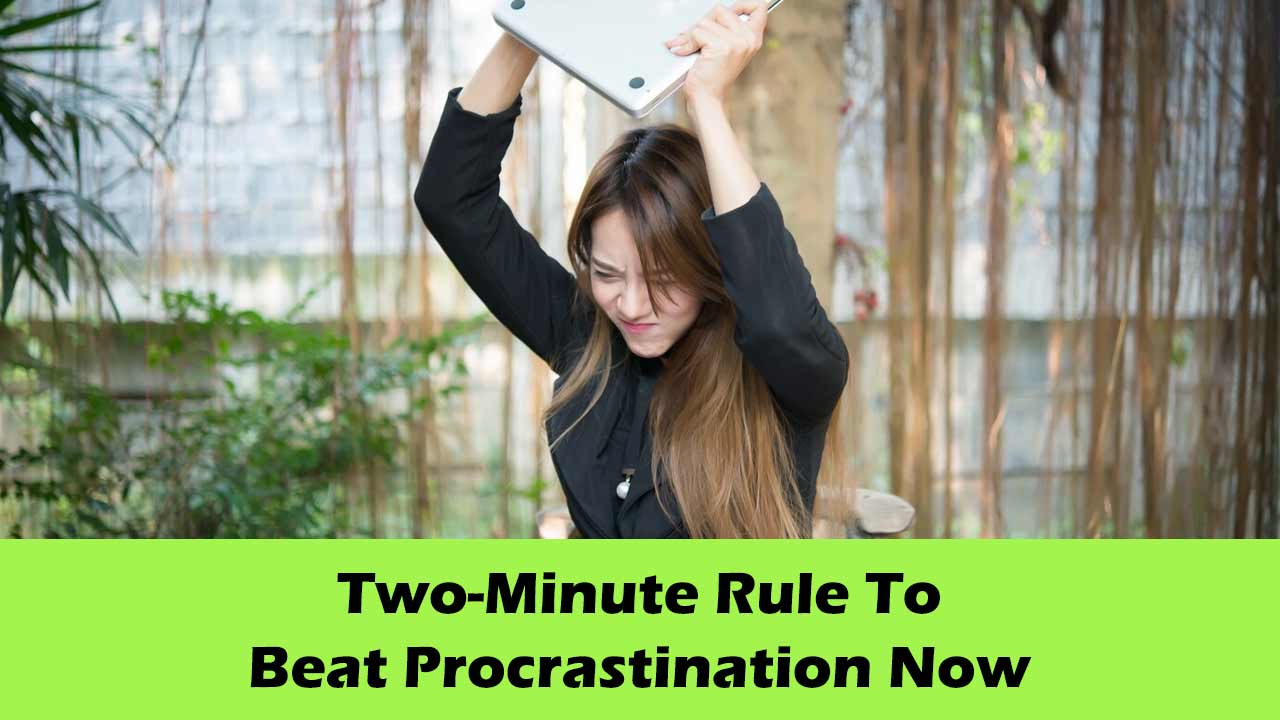Procrastination affects 95% of people at some point in their lives, turning simple tasks into overwhelming mountains. But what if there was a scientifically-backed method that could help you tackle any task in just two minutes? Enter the Two-Minute Rule—a productivity strategy that’s changing how millions of people approach their daily responsibilities.
This powerful technique isn’t just another productivity hack floating around the internet. It’s a proven psychological principle that works by leveraging how our brains naturally process tasks and build habits. By the end of this post, you’ll understand exactly how to implement this rule and why it’s so effective at breaking the procrastination cycle.
What Is the Two-Minute Rule?
The Two-Minute Rule comes in two distinct versions, each targeting different aspects of productivity and habit formation.
Version 1: The Getting Things Done Method
Popularized by productivity expert David Allen in his book “Getting Things Done,” this version states: If a task takes less than two minutes to complete, do it immediately rather than adding it to your to-do list.
Version 2: The Habit Formation Approach
Created by habits expert James Clear, this version focuses on building new habits: When starting a new habit, scale it down to something that takes less than two minutes to complete.
Both versions work by removing the mental barriers that cause procrastination, but they target different scenarios in your daily life.
The Science Behind Why It Works
Reduces Decision Fatigue
Your brain makes thousands of decisions daily, leading to decision fatigue that makes procrastination more likely. The Two-Minute Rule eliminates the decision-making process by providing a clear, simple criterion: Can this be done in two minutes or less?
Research from Stanford University shows that when people reduce the number of decisions they need to make, their mental energy remains higher throughout the day. This preserved energy can then be directed toward more important tasks.
Overcomes the Activation Energy Barrier
Psychologists have identified that starting a task requires “activation energy”—the mental effort needed to begin. Many tasks seem harder to start than they actually are to complete. The Two-Minute Rule works by dramatically lowering this activation energy barrier.
When you commit to just two minutes, your brain doesn’t perceive the task as threatening or overwhelming. This reduces the fight-or-flight response that often triggers procrastination behaviors.
Builds Momentum Through Small Wins
The psychological principle of “small wins” demonstrates that completing minor tasks creates positive momentum. Each completed two-minute task releases dopamine, the neurotransmitter associated with pleasure and motivation.
This chemical reward system reinforces the behavior, making it easier to tackle subsequent tasks. Over time, this creates a positive feedback loop that combats procrastination tendencies.
How to Apply the Two-Minute Rule Effectively

For Immediate Tasks (Allen’s Version)
Start by identifying tasks that genuinely take two minutes or less:
Email Management: Reply to simple emails immediately instead of marking them as “read” and forgetting about them.
Quick Cleaning: Put dishes in the dishwasher, make your bed, or file important documents right away.
Administrative Tasks: Pay a bill online, schedule an appointment, or update your calendar immediately.
Communication: Send that quick text message, make a brief phone call, or respond to a colleague’s question.
The key is honest assessment. If a task will realistically take longer than two minutes, add it to your proper task list rather than rushing through it poorly.
For Habit Building (Clear’s Version)
Transform larger goals into two-minute starter habits:
Want to Exercise Daily? Start with “put on workout clothes” or “do five push-ups.”
Want to Read More? Begin with “read one page” or “open the book.”
Want to Meditate? Start with “sit quietly for two minutes” or “open the meditation app.”
Want to Write? Begin with “write one sentence” or “open the document.”
The goal isn’t to stop at two minutes forever, but to establish the habit of starting. Once you’ve consistently done the two-minute version, you can gradually expand the time commitment.
Common Mistakes to Avoid
Underestimating Task Duration
Many people consistently underestimate how long tasks actually take. Time yourself completing various activities to develop a more accurate sense of what truly fits within two minutes.
Perfectionism Trap
The Two-Minute Rule is about progress, not perfection. Resist the urge to spend ten minutes perfecting a task that should take two minutes. Good enough is often sufficient for small tasks.
Ignoring Context
Not every moment is appropriate for every two-minute task. Consider your energy levels, location, and current priorities before jumping into a quick task.
Overwhelming Yourself
Don’t try to tackle every possible two-minute task at once. This defeats the purpose and can lead to burnout. Choose strategic tasks that align with your current priorities.
Advanced Strategies for Maximum Impact
The Two-Minute Scan
Spend five minutes each morning identifying potential two-minute tasks for the day. This mental preparation makes it easier to spot opportunities throughout the day.
Batch Processing
Group similar two-minute tasks together. For example, handle all quick emails in one session, or tackle all small cleaning tasks at once.
The Momentum Bridge
Use two-minute tasks as bridges between larger projects. When you finish a big task, complete a quick two-minute task before starting the next major project. This maintains your productive momentum.
Environmental Design
Set up your environment to support two-minute actions. Keep cleaning supplies accessible, have a designated spot for important documents, and organize your workspace to minimize friction for quick tasks.
Measuring Your Success
Track your progress to maintain motivation and identify patterns:
Daily Completion Count: Note how many two-minute tasks you complete each day.
Procrastination Reduction: Monitor how often you delay small tasks compared to before implementing the rule.
Energy Levels: Pay attention to how clearing small tasks affects your overall energy and mood.
Habit Development: For habit-focused applications, track consistency rather than duration or intensity.
When the Two-Minute Rule Isn’t Enough
The Two-Minute Rule is powerful, but it’s not a complete solution for all productivity challenges. Recognize when you need additional strategies:
For Complex Projects: Break large projects into smaller components, some of which might become two-minute tasks.
For Deep Work: Use the rule to clear small tasks before dedicating time to focused, uninterrupted work.
For Chronic Procrastination: Consider whether underlying issues like perfectionism, fear of failure, or lack of clarity need addressing.
Transform Your Productivity Starting Today
The Two-Minute Rule succeeds because it works with your brain’s natural tendencies rather than against them. By removing barriers to action and building positive momentum, this simple strategy can dramatically reduce procrastination in your daily life.
Start implementing the Two-Minute Rule today by choosing one version that resonates with your current needs. Whether you’re clearing small tasks immediately or building new habits gradually, consistency matters more than perfection.
Remember: the goal isn’t to become a two-minute task machine, but to develop a bias toward action that serves your larger goals and reduces the mental weight of procrastination.
FAQs
Why does this two-minute rule work so well?
Procrastination often happens because tasks feel too big or require too much mental effort to begin. The Two-Minute Rule tackles this by lowering the “activation energy” needed to start. Since two minutes feels manageable, you’re more likely to take action. Once you start, you often keep going, but even if you don’t, you’ve built momentum. Research also shows that quick wins release dopamine, which motivates you to keep moving forward.
What if I still procrastinate on bigger tasks?
The Two-Minute Rule works best for small tasks or habit starters, but for larger projects, try breaking them into smaller steps. For example, instead of “write the report,” start with “open the document and outline three bullet points.” If deeper procrastination is an issue, you might need to explore other strategies alongside this one, like time-blocking or addressing fear of failure.
Can I combine this with other productivity methods?
Absolutely! The Two-Minute Rule pairs well with techniques like the Pomodoro Method (use it during breaks) or the Eisenhower Matrix (tackle quick, urgent tasks first). It’s not a replacement for deeper work strategies but works as a tool to reduce procrastination’s grip on your day.
How soon will I see results?
Some people feel immediate relief from knocking out small tasks right away. For habits, consistency is key—after a few weeks, the two-minute version becomes automatic, making it easier to expand. Tracking your progress (like noting how many small tasks you complete) can help you stay motivated.




